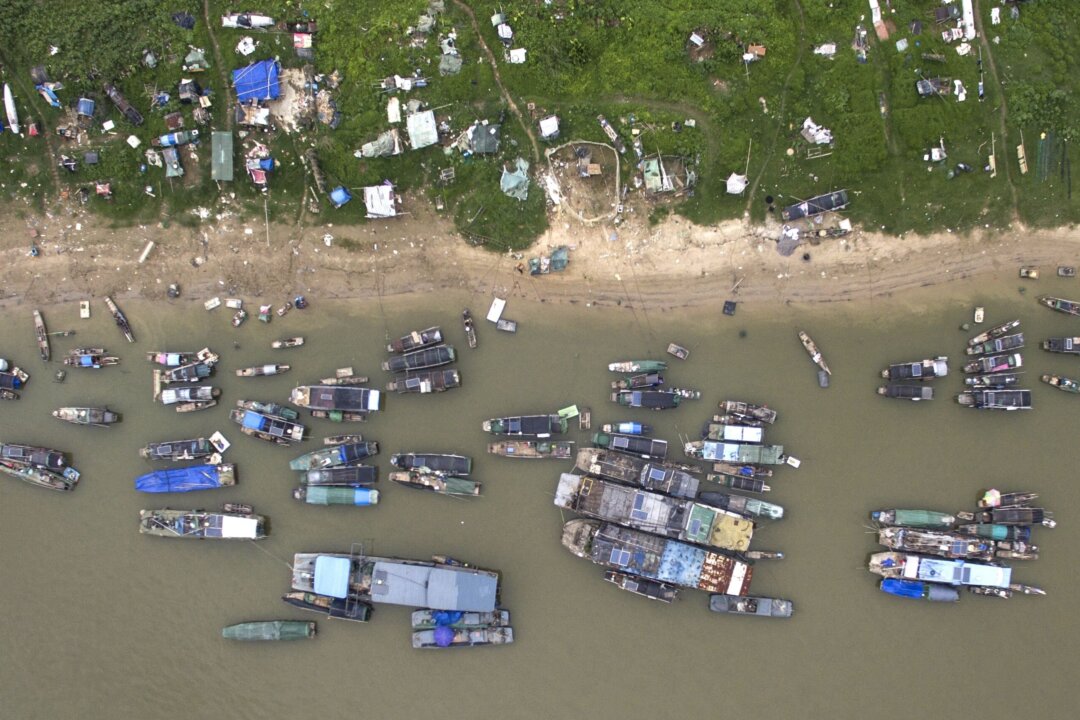Protesters said the forcible transfer of their fishing boats to a neighboring village will threaten their livelihoods.
Riot police clashed with residents of a southern Chinese fishing village who blocked roads last week to protest a state order to relocate their boats from a long-used typhoon shelter, fearing the move would threaten their livelihoods, according to residents.
The protest began on the afternoon of May 6 in Guang’ao Village, Shantou City, Guangdong Province, as nearly 2,000 villagers gathered along the main road near the harbor. The villagers said they opposed the forcible relocation of their fishing boats to a temporary shelter in a neighboring village, which they said was unsafe and prone to theft and vandalism.
The standoff lasted into the early hours of May 7, when over 100 riot police were deployed to forcibly disperse the crowd, triggering physical confrontations, injuries, and multiple arrests.
A local resident, Chen Mingjian, who gave a pseudonym out of fear of government retaliation, told the Chinese edition of The Epoch Times that the village has two typhoon shelters. The older one has reliably protected the village’s 600-plus fishing boats for years, withstanding typhoons above category 10 without damaging any vessels—a record that has earned it the trust of local fishermen.
By contrast, Chen said the newer shelter, built in 2019, was not constructed according to approved plans. He said it lacks sufficient wind protection, contains hidden reefs, poses significant safety risks, and cannot accommodate all the village’s boats. As a result, residents have long resisted relocating their vessels from the original shelter.
In 2024, the Guang’ao Village Committee privately sold the older shelter without public approval, said villagers. After the sale, when officials attempted to force local fishermen to relocate their boats, the order was met with strong resistance.
Chen said residents raised safety concerns about the newer shelter with local officials in October last year but their appeals were ignored. The community was shocked when, on May 6, a large police force was deployed to enforce the boat relocation, triggering the protest from the villagers.
Beyond their immediate concerns over the fishing boats, Chen revealed deeper grievances in the village. Over the past decade, all of the village’s collective land under the control of local authorities has been sold off, yet ordinary residents have been kept in the dark about the transactions and where the proceeds went. With decades-long missing dividend payments to the community, according to villagers, years of frustration erupted into a mass protest.
Following last week’s crackdown, a small group of villagers, including Chen, met with village officials and the district-level Chinese Communist Party chief, demanding resolution of the typhoon shelter issue and transparency over the past land sales from their community. While the Party chief promised to address their concerns, no concrete plan was offered, according to Chen.
Guang’ao Village, with a nearly 300-year history, is home to more than 14,000 residents and remains heavily reliant on marine fishing. Around 2,000 villagers are engaged in offshore operations, supporting a network of related industries such as seafood processing, sales, logistics, and equipment maintenance. Fishing accounts for over 65 percent of the village’s total economic output.
In rural China, other local officials have been accused of selling collective land for personal gain without properly compensating villagers.
A high-profile example occurred in 2011 in Wukan, Guangdong Province, where villagers staged months of protests after officials allegedly sold more than 990 acres of village land. The proceeds, claimed to be more than $110 million, were believed to have been embezzled by corrupt local authorities.

